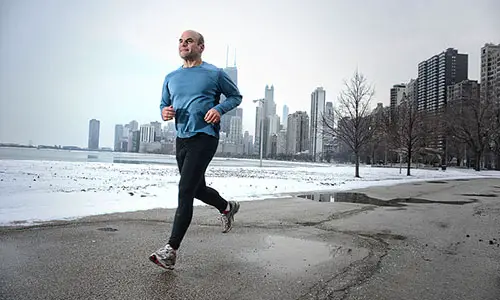1. Running is becoming more adventurous and dirty
In 2014, more people ran and completed mud runs and obstacle races than half marathons and full marathons. In 2013, these unconventional races had approximately 4 million finishers. However, the 5000 meter race remains the most famous which had over 6.2 million finishers in the year 2012 according to Running USA.
2. Breasts move much more than they appear during running
According to researchers based in England’s University of Portsmouth, during running, breasts do not just bounce. Rather, they more in and out and side to side to create a complex figure eight pattern. This breast displacement movement causes lasting damage to coopers ligaments and cause premature breast sagging. This makes it necessary for runners to wear sports bras to support the breasts by minimizing bouncing,
3. Top running speed is in the 20s
A person runs in top speed during their 20s at least over marathon distances. In 2010 and 2011, researchers checked the finishing time for runners in the New York Marathon and realized that women run fastest at age 29 and men at age 27. For each younger year, the speed was 4% slower and 2% slower each year that follower. This means than marathoners aged 18 run just about the same speed with a finisher aged 60 years.
4. Running till age 90 and more
Fauja Singh was the oldest person to compete in a marathon race at age 101. Fauja ran the London Marathon and finished in 7:49:21. Among women, Gladys Burrill aged 92 participated in the 2010 Honolulu Marathon finishing after 9:53:16.
5. Running burns calories
With each mile covered, running burns an estimated 100 calories. However, burning calories depends more on the pace of running, a person’s weight and level of fitness. The best formula of calculating how much calorie is burnt during running is multiplying a persons weight with the number of miles covered in running. The result represents the amount of calories burnt in addition to the basal metabolic rate, which the calories burnt when one is sitting around. As one becomes more fit and runs the same distance, the amount of calories burnt reduces.
6. Running as job requirement
Running is at times used as a job requirement. The basic physical fitness test on the army comprises two mile runs, sit ups and push-ups. Army prospects are often required to run faster to meet the qualification for the bi-annual Army fitness test.
7. Women run more
Women comprise 56% of the 15.5 million people who completed races in 2012. The half marathon race has the largest number of female runners featuring a 61/39 gender split. Marathon races are the only running events where women exceed men when it comes to signups.
8. Weight Loss and Aging
Running aids in shedding excess weight through calorie and fat burning. This enables people to attain a slim physique. Running also helps with reducing aging effects on the human body. It reduces the aging pace keeping a person looking physically young and mentally alert and adept. It nourishes skin and adds a healthy glow.
9. Bone Loss and Muscle
Running helps reduce bone and muscle loss, a problem that is caused by various factors. Running is seen as one of the significant exercises that aids in maintaining uniformity of body parts and keeping the body in shape for years.
10. Growth Hormones
Running is healthy for teens and children because it enhances their growth hormones enabling them to develop as individuals. As a dedicated exercise, running helps increase body weight and height as well as natural energy levels.











Leave a Reply